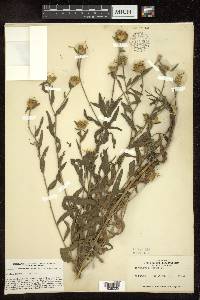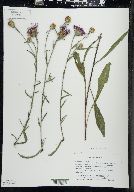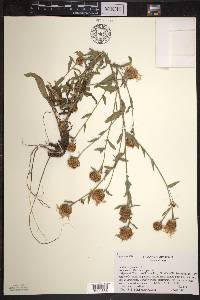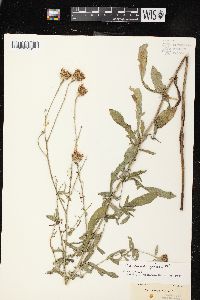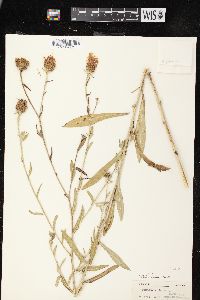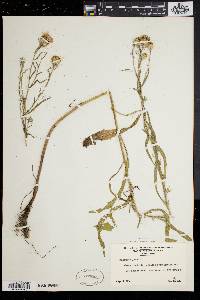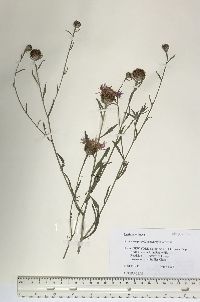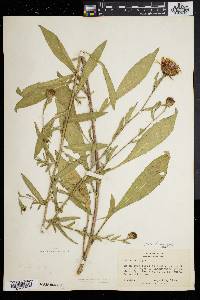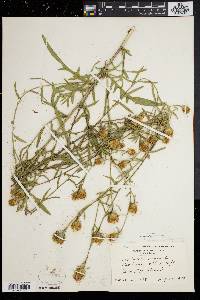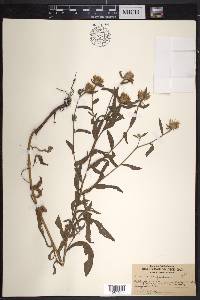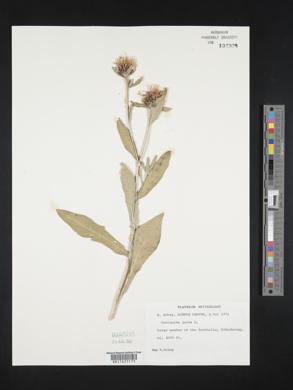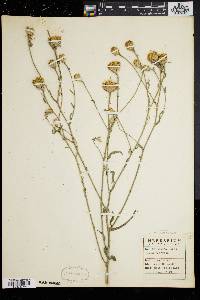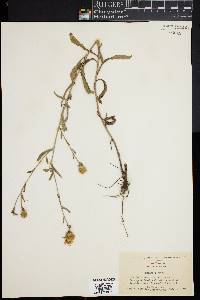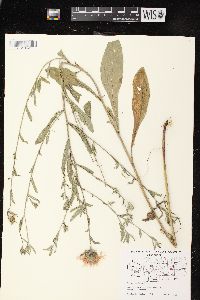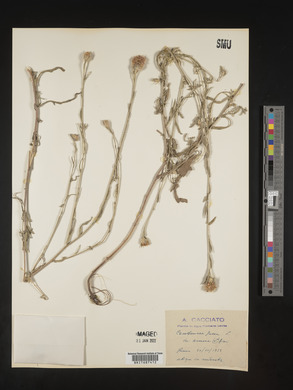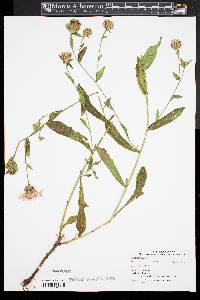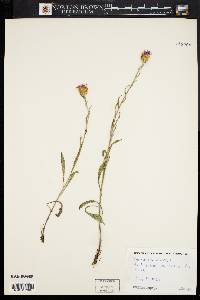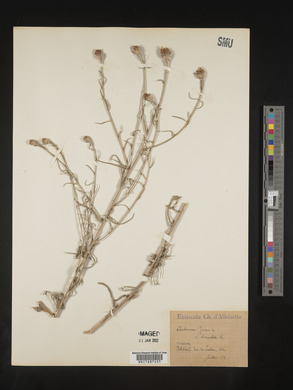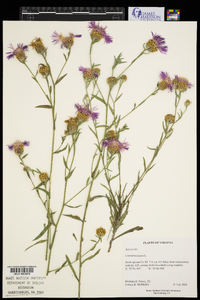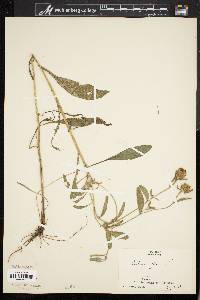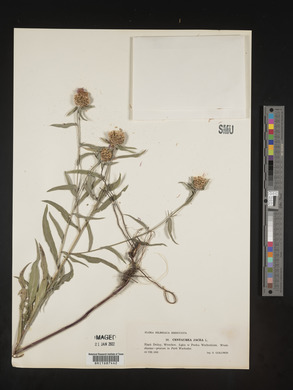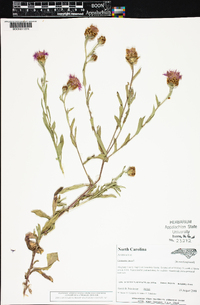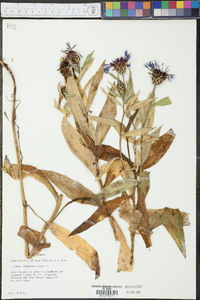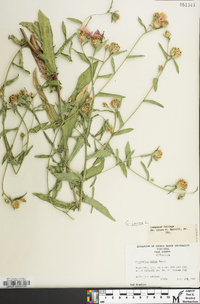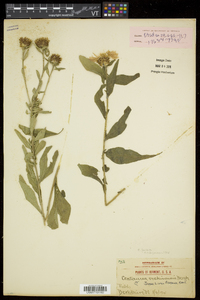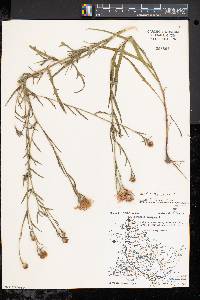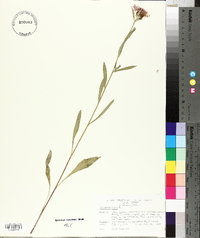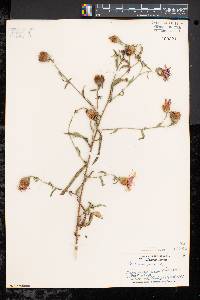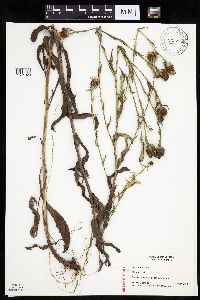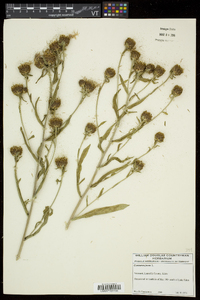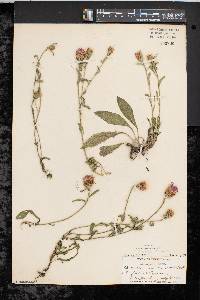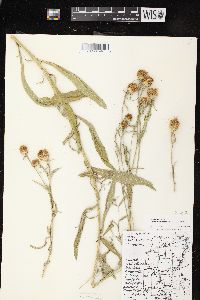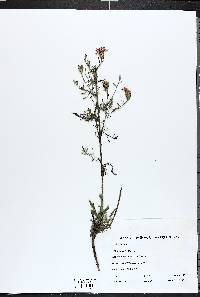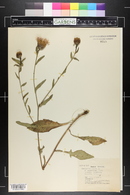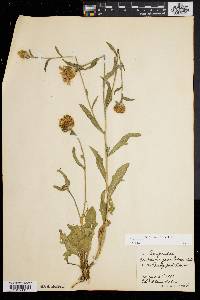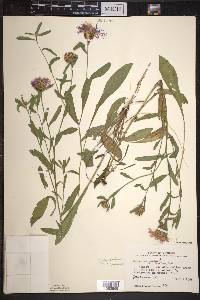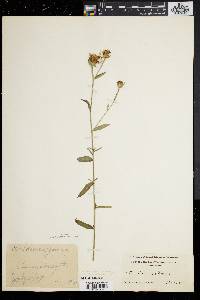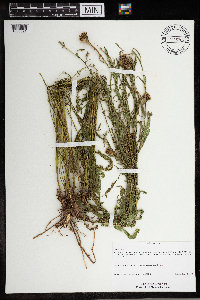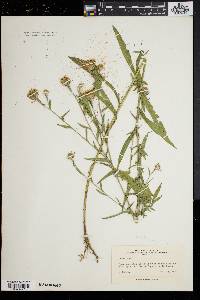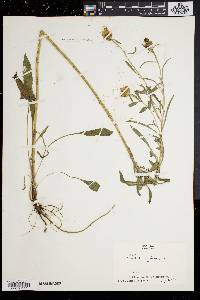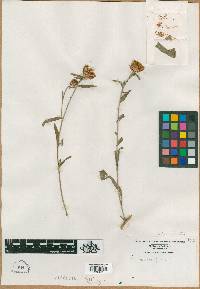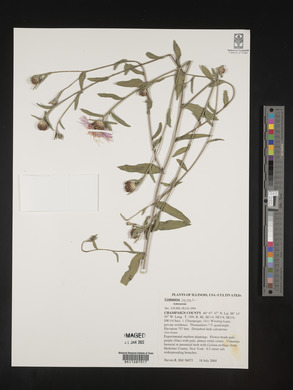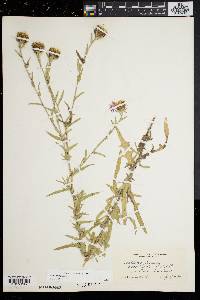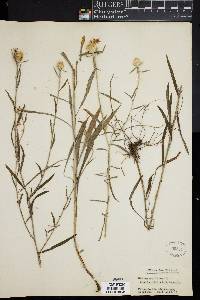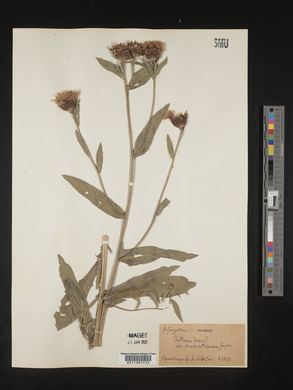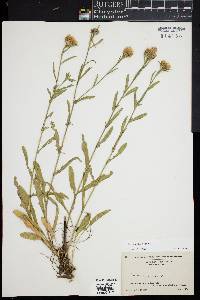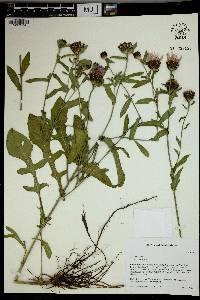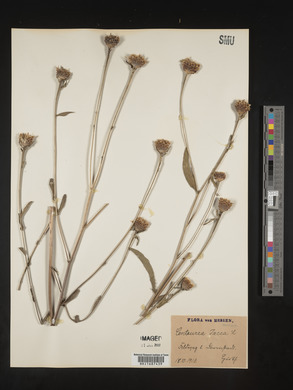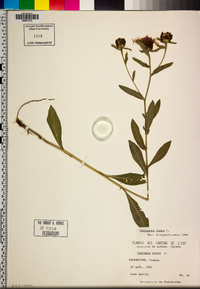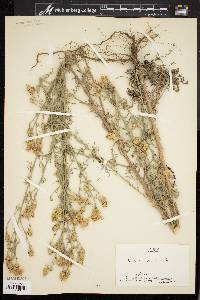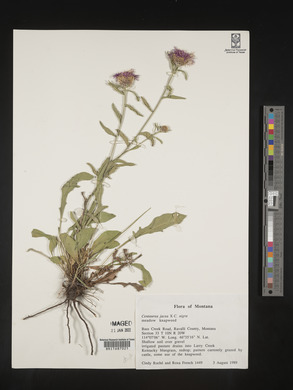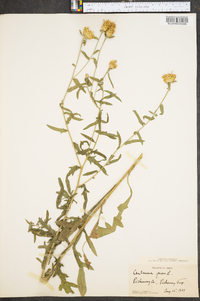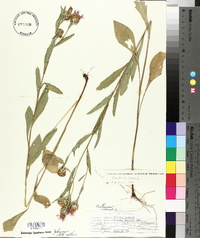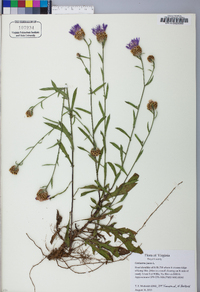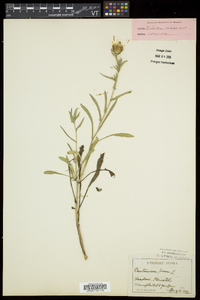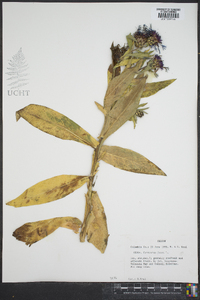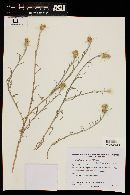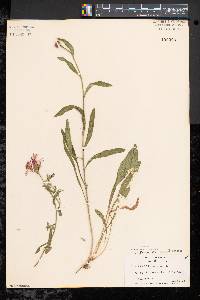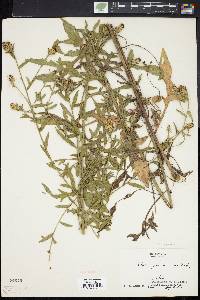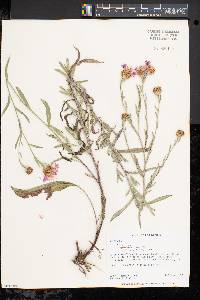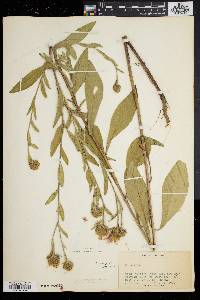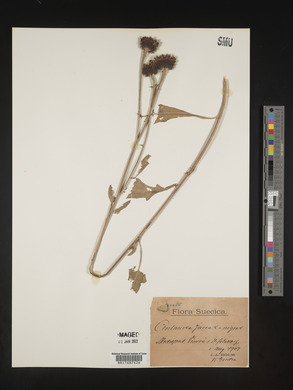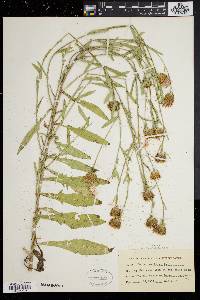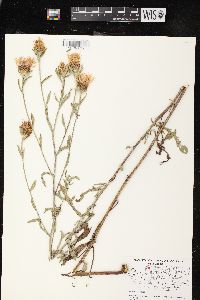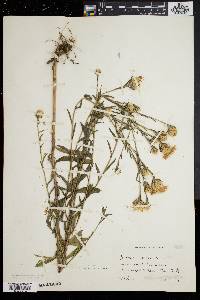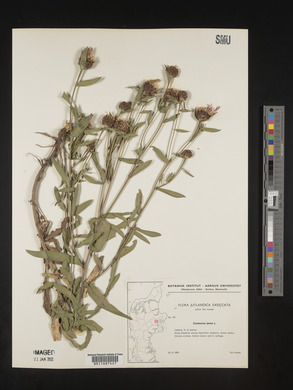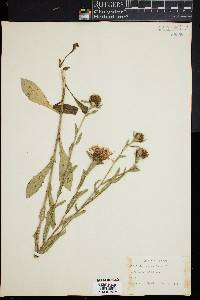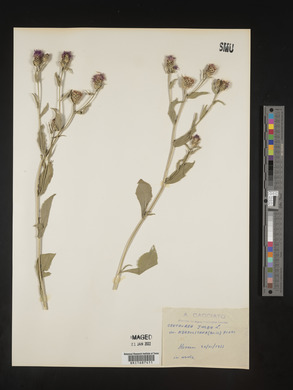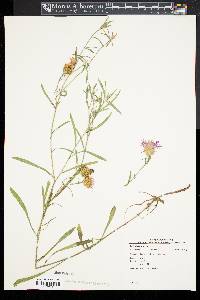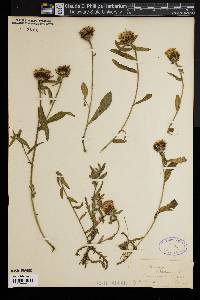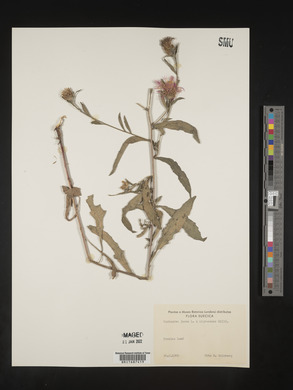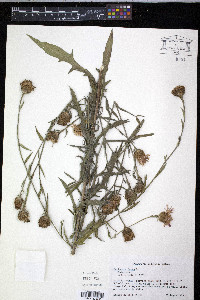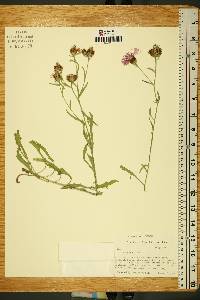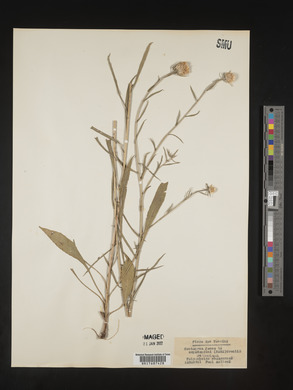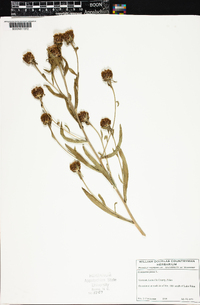
|
|
|
|
Family: Asteraceae
Brown-Ray Knapweed
|
Perennials, 30-150 cm. Stems 1-few, erect or ascending, openly branched distally, villous to scabrous with septate hairs, loosely tomentose, ± glabrate. Leaves: basal and proximal cauline petiolate, blades oblanceolate or elliptic, 5-25 cm, margins entire or shallowly dentate to irregularly pinnately lobed; distal cauline sessile, not decurrent, gradually smaller, blades linear to lanceolate, entire or dentate. Heads radiant, in few-headed corymbiform arrays, leafy-bracted pedunculate. Involucres ovoid to campanulate or hemispheric, 15-l8 mm, usually about as wide as high. Principal phyllaries: bodies lanceolate to ovate, loosely tomentose or glabrous, usually concealed by expanded appendages, appendages usually light brown, erect, overlapping, ± concave, usually roundish, margins pale, broad, entire to coarsely dentate, membranous. Inner phyllaries: tips truncate, irregularly dentate or lobed. Florets 40-100+; corollas purple (rarely white), those of sterile florets ± expanded, exceeding corollas of fertile florets, those of fertile florets 15-18 mm. Cypselae tan, 2.5-3 mm, finely hairy; pappi absent. 2n = 22, 44. Flowering summer-fall (Jun-Oct). Roadsides, fields, pastures, waste ground; 50-1300 m; introduced; Greenland; B.C., N.B., Ont., Que.; Calif., Conn., Del., Idaho, Ill., Ind., Iowa, Ky., Maine, Md., Mass., Mich., Mont., N.H., N.J., N.Y., Ohio, Oreg., Pa., R.I., Utah, Vt., Va., Wash., W.Va., Wis.; Eurasia. Brown knapweed is listed as a noxious weed in Washington. The Centaurea jacea complex has been the subject of much controversy. The plants are widely distributed in Europe and variable in readily noticeable characters of the heads, florets, and cypselae. Several entities are commonly recognized, usually at the species level. The various named taxa are apparently all more or less interfertile, and natural hybridization has resulted in a plethora of intermediates that variously combine the features of the parental types. The numerous intermediates have been considered to be interspecific hybrids in some treatments or alternatively have been named as species or as infraspecific taxa within one or another of the parental species. The nomenclatural tangles are daunting, complicated by misapplication of names and the inadequate indexing of infraspecific names. In an elegant biosystematic study of the representatives of this complex in England, E. M. Marsden-Jones and W. B. Turrill (1954) demonstrated the hazards of attempting to apply different names to all of the numerous intermediates. Despite the clear evidence that the entities are part of one biological species, Marsden-Jones and Turrill chose, for nomenclatural convenience, to treat the English plants as three species (Centaurea jacea, C. nigra, and C. nemoralis) with numerous interspecific hybrids rather than as a single variable species, thereby leaving a large number of sexually reproducing forms unassignable to species. Further biosystematic studies of the Centaurea jacea complex involving additional races were carried out by C. Gardou (1972). She demonstrated that there are at least 18 diploid cytotypes within this complex plus a number of tetraploids. Most of the diploids have discrete geographic ranges in Europe. Some diploid members of the complex are apomictic, others autogamous, and still others outcrossers. Hybrids among the diploids are variably interfertile. Various tetraploids have arisen; some resemble one or another of the diploid races; many apparently allotetraploid races variously combine features of the diploids. The tetraploids of various origins are fully interfertile, have much wider ecologic tolerances than the diploids, and have spread widely. Introgression is common. Some of the diploids easily hybridize with tetraploids. The many intermediates are difficult to classify. Gardou´s conclusion was that if one were strictly to apply the biologic Habitally similar to C. nigra; invol 12-18 mm high, from a little narrower to a little broader than high; appendages of the invol bracts well developed, broad, tan to dark brown, the middle and outer ones rather irregularly lacerate, the inner ones less so and often deeply bifid; marginal fls almost always enlarged; pappus none; 2n=22, 44. Fields, roadsides, and waste places; native of Europe, now widely established in s. Can. and n. U.S., s. to W.Va. June-Sept. Gleason, Henry A. & Cronquist, Arthur J. 1991. Manual of vascular plants of northeastern United States and adjacent Canada. lxxv + 910 pp. ©The New York Botanical Garden. All rights reserved. Used by permission. |

